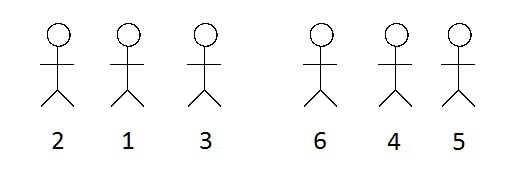| Submit | All submissions | Best solutions | Back to list |
UOFTCG - Office Mates |
Dr. Baws has an interesting problem. His $N$ graduate students, while friendly with some select people, are generally not friendly with each other. No graduate student is willing to sit beside a person they aren't friends with.

The desks are up against the wall, in a single line, so it's possible that Dr. Baws will have to leave some desks empty. He does know which students are friends, and fortunately the list is not so long: it turns out that for any subset of $K$ graduate students, there are at most $K-1$ pairs of friends. Dr. Baws would like you to minimize the total number of desks required. What is this minimum number?
Input
The input begins with an integer $T \le 50$, the number of test cases. Each test case begins with two integers on their own line: $N \le 100000$, the number of graduate students (who are indexed by the integers $1$ through $N$), and $M$, the number of friendships among the students. Following this are $M$ lines, each containing two integers $i$ and $j$ separated by a single space. Two integers $i$ and $j$ represent a mutual friendship between students $i$ and $j$.
The total size of the input file does not exceed 2 MB.
Output
For each test case output a single number: the minimum number of desks Dr. Baws requires to seat the students.
Example
Input: 1 6 5 1 2 1 3 1 4 4 5 4 6 Output: 7
Explanation of Sample
As seen in the diagram, you seat the students in two groups of three with one empty desk in the middle.
| Added by: | SourSpinach |
| Date: | 2014-02-18 |
| Time limit: | 2s |
| Source limit: | 50000B |
| Memory limit: | 1536MB |
| Cluster: | Cube (Intel G860) |
| Languages: | All except: ASM64 |
| Resource: | Cowritten by Andrew Henrey, used in the 2013 UofT ACM Tryouts |


 RSS
RSS